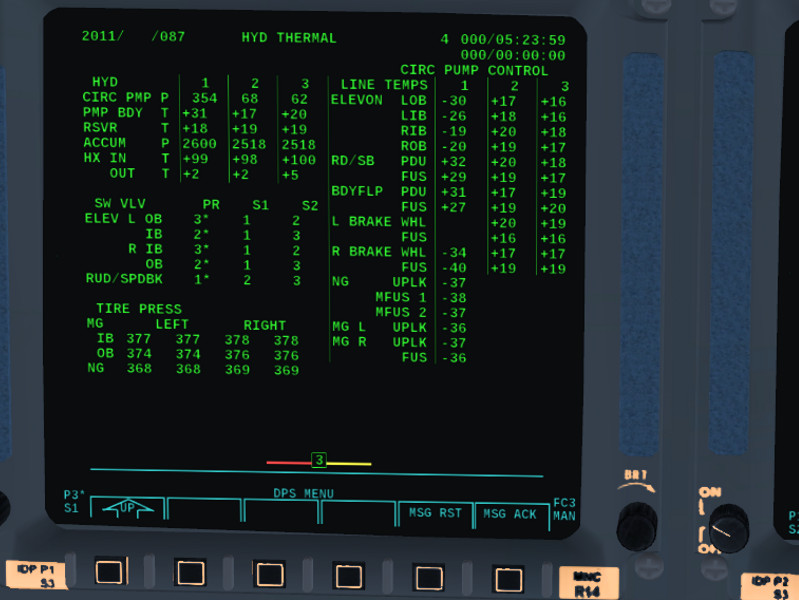Thorsten
Active member
- Joined
- Dec 7, 2013
- Messages
- 785
- Reaction score
- 56
- Points
- 43
I can't resist showing those. Wayne has made it is personal quest to implement the lighting of the Shuttle cockpit as it really works (and even extended the GLSL shader to support more light sources to get it done).
Now every single button and rotary knob adjusts light as it should be - all dim switches are working, it's possible to change instrument lighting as well as back-lighting of the labels, operate the fluorescents and the incandescents independently... it's pretty much a work of art (I dare say it's the most sophisticated light concept for any cockpit in Flightgear).
Glareshield light on and panel backlights off CDR side, panel backlights on PLT side:

We could do some work on the lamp objects themselves, right now there's just the emissivity dialed up, but I know the GLSL magic to make lights look like lights - the illuminated console PLT side:

Details with shadows from two different light sources criss-crossing (MDUs are also dimmed compared with the previous shots):

Now every single button and rotary knob adjusts light as it should be - all dim switches are working, it's possible to change instrument lighting as well as back-lighting of the labels, operate the fluorescents and the incandescents independently... it's pretty much a work of art (I dare say it's the most sophisticated light concept for any cockpit in Flightgear).
Glareshield light on and panel backlights off CDR side, panel backlights on PLT side:

We could do some work on the lamp objects themselves, right now there's just the emissivity dialed up, but I know the GLSL magic to make lights look like lights - the illuminated console PLT side:

Details with shadows from two different light sources criss-crossing (MDUs are also dimmed compared with the previous shots):


























